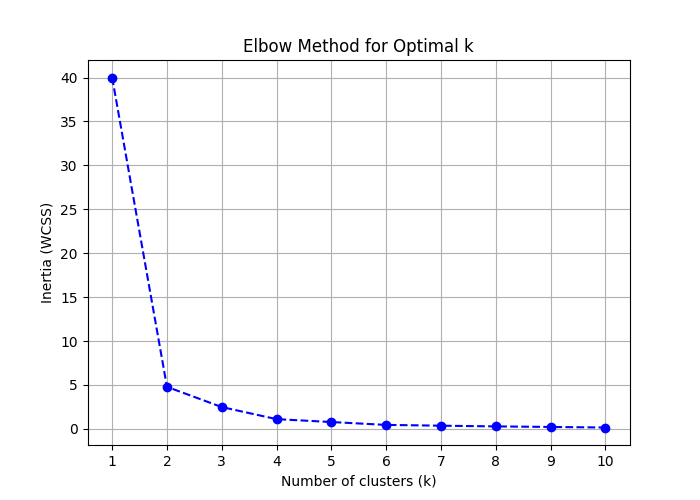🧠 AI with Python – 🐍📈📊 Elbow Method to Find Optimal k
Posted On: September 18, 2025
Description:
Clustering is a powerful unsupervised learning technique, but one common challenge is deciding the number of clusters (k) to use.
The Elbow Method provides a simple, visual way to determine the optimal k for K-Means clustering.
Why Do We Need the Elbow Method?
- K-Means requires k in advance.
- Too few clusters → underfitting (broad, meaningless groups).
- Too many clusters → overfitting (clusters lose interpretability).
- The Elbow Method strikes a balance by analyzing how clustering performance improves with increasing k.
How It Works
The Elbow Method uses inertia (also called Within-Cluster Sum of Squares, WCSS):
- Inertia measures how tightly grouped the points are within each cluster.
- As k increases, inertia decreases because points are closer to their centroids.
- At some point, adding more clusters yields only marginal improvement → this is the elbow point.
Applying the Elbow Method
We try different values of k and calculate inertia for each.
inertia = []
for k in range(1, 11):
kmeans = KMeans(n_clusters=k, n_init=10, random_state=42)
kmeans.fit(X_scaled)
inertia.append(kmeans.inertia_)
Then we plot inertia against k to visualize the curve.
plt.plot(range(1, 11), inertia, marker="o", linestyle="--")
plt.xlabel("Number of clusters (k)")
plt.ylabel("Inertia (WCSS)")
plt.title("Elbow Method for Optimal k")
plt.show()
Sample Output
The resulting plot looks like this:

Figure: Elbow Method for Optimal k.
📊 At first, inertia drops steeply. 📊 After a certain k, the curve flattens. 📊 That bend — the elbow point — suggests the optimal number of clusters.
In the demo dataset, the elbow occurs around k = 2 or 3.
Key Takeaways
- The Elbow Method is a quick, intuitive way to estimate k.
- Works best when clusters are well separated.
- Should be combined with other methods (e.g., Silhouette Score) for confirmation.
- Helps avoid overfitting by not adding unnecessary clusters.
Code Snippet:
# Core libraries
import pandas as pd
import numpy as np
import matplotlib.pyplot as plt
from sklearn.preprocessing import StandardScaler
from sklearn.cluster import KMeans
# Demo dataset
data = {
"CustomerID": range(1, 21),
"AnnualIncome_k$": [15, 16, 17, 18, 20, 22, 25, 28, 30, 33, 60, 62, 65, 68, 70, 72, 75, 78, 80, 85],
"SpendingScore": [18, 20, 22, 25, 28, 30, 35, 40, 42, 45, 55, 58, 60, 62, 65, 66, 68, 70, 72, 75],
}
df = pd.DataFrame(data)
features = ["AnnualIncome_k$", "SpendingScore"]
X = df[features].values
# Standardize features
scaler = StandardScaler()
X_scaled = scaler.fit_transform(X)
inertia = []
# Try k from 1 to 10
for k in range(1, 11):
kmeans = KMeans(n_clusters=k, n_init=10, random_state=42)
kmeans.fit(X_scaled)
inertia.append(kmeans.inertia_)
plt.figure(figsize=(7, 5))
plt.plot(range(1, 11), inertia, marker="o", linestyle="--", color="b")
plt.title("Elbow Method for Optimal k")
plt.xlabel("Number of clusters (k)")
plt.ylabel("Inertia (WCSS)")
plt.xticks(range(1, 11))
plt.grid(True)
plt.show()
Link copied!
Comments
Add Your Comment
Comment Added!




No comments yet. Be the first to comment!